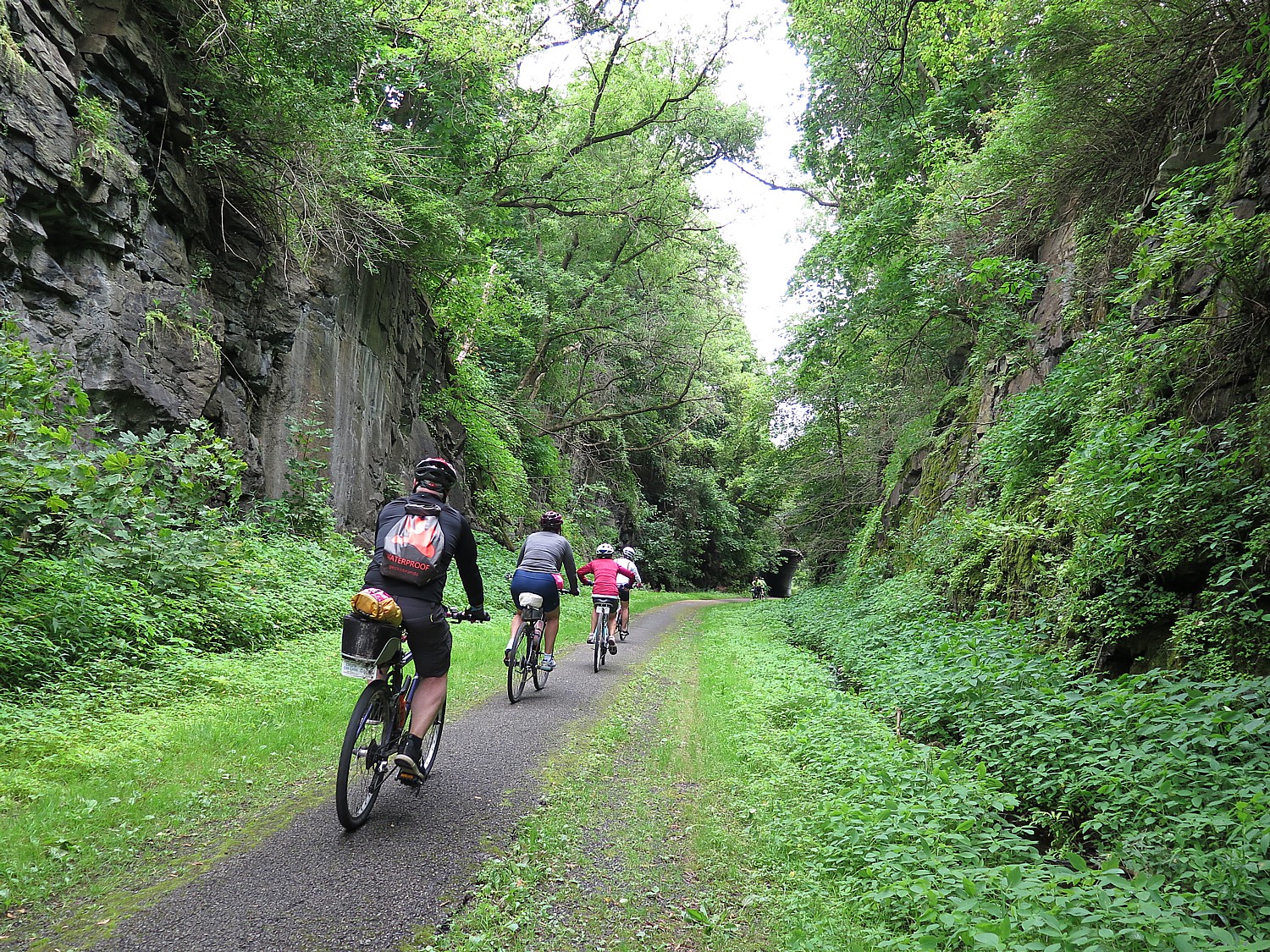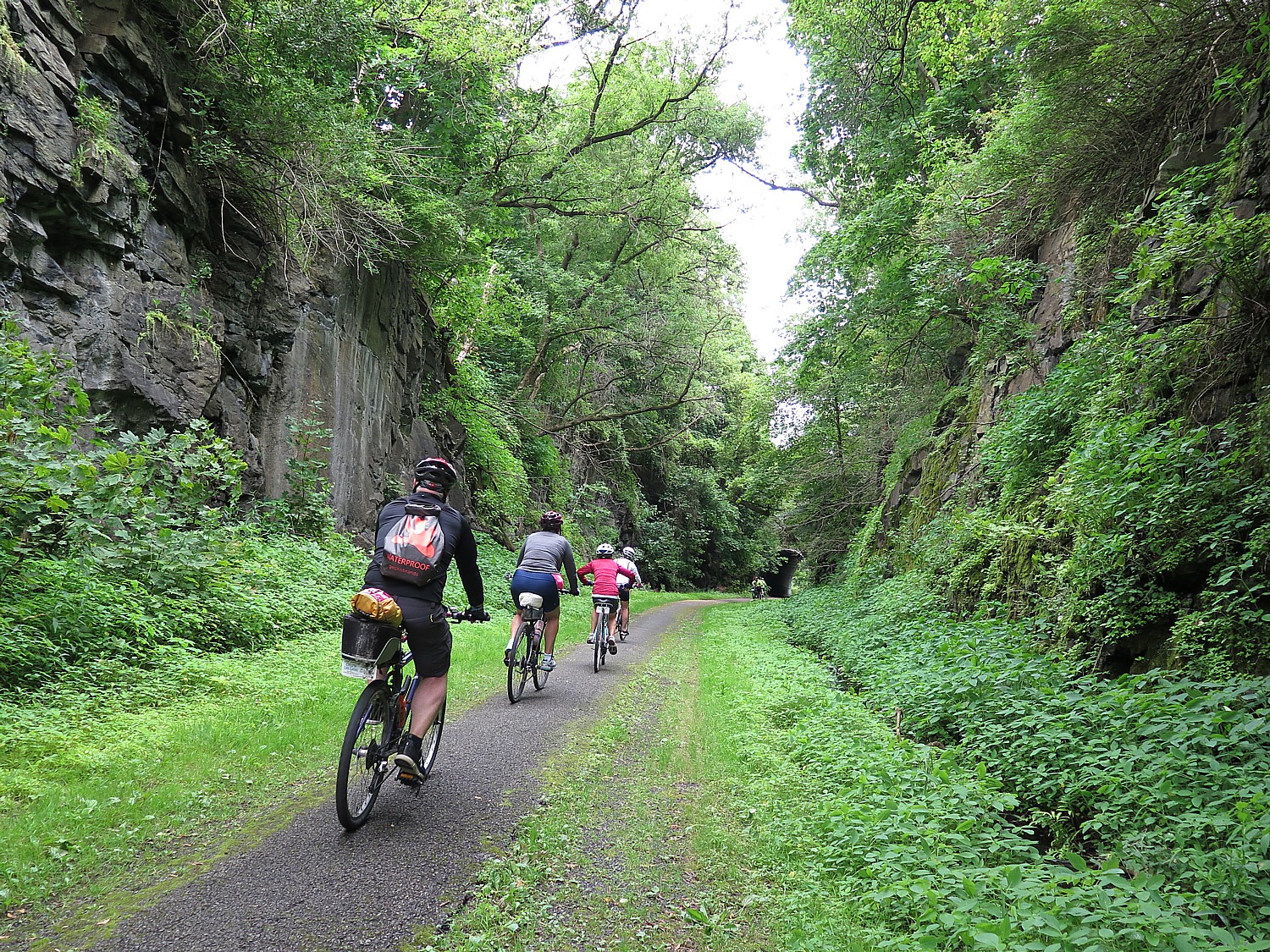
By Karen Rubin, Travel Features Syndicate, goingplacesfarandnear.com
Day 6: Rome to Canajoharie, 63 Miles
It’s Day 6 of our 8-day, 400-mile Parks & Trails NY’s annual Buffalo to Albany Cycle the Erie bike tour following the Erie Canalway. I was lucky last night when the deluge we had while biking stopped just as I came into the campsite and I was able to set up my tent on the grassy area surrounding Fort Stanwix, in Rome. This morning, I am awakened at 4:15 am to another massive downpour. I check weather.com app on my cellphone which says the rain would stop by 5:45 am. So I get up at 5:45 am (which is not unusual for the Erie Canal cyclists) and sure enough, the rain has stopped. I take advantage of the dry spell to organize my packing and take down the tent to avoid more rain.
Our breakfast – freshly prepared pancakes which we consume at long tables laid out with pretty placemats – is at the local YMCA before we head out onto the Canalway for our 63-mile ride to Canajoharie – the longest ride of our trip, there are actually three rest stops along the ride today, at mile 14, 41.5 and 52.5).
Yesterday’s rain has made the trail muddy, and when we go off the trail onto the road, there are serious headwinds and some significant hills, and my gears aren’t working properly.
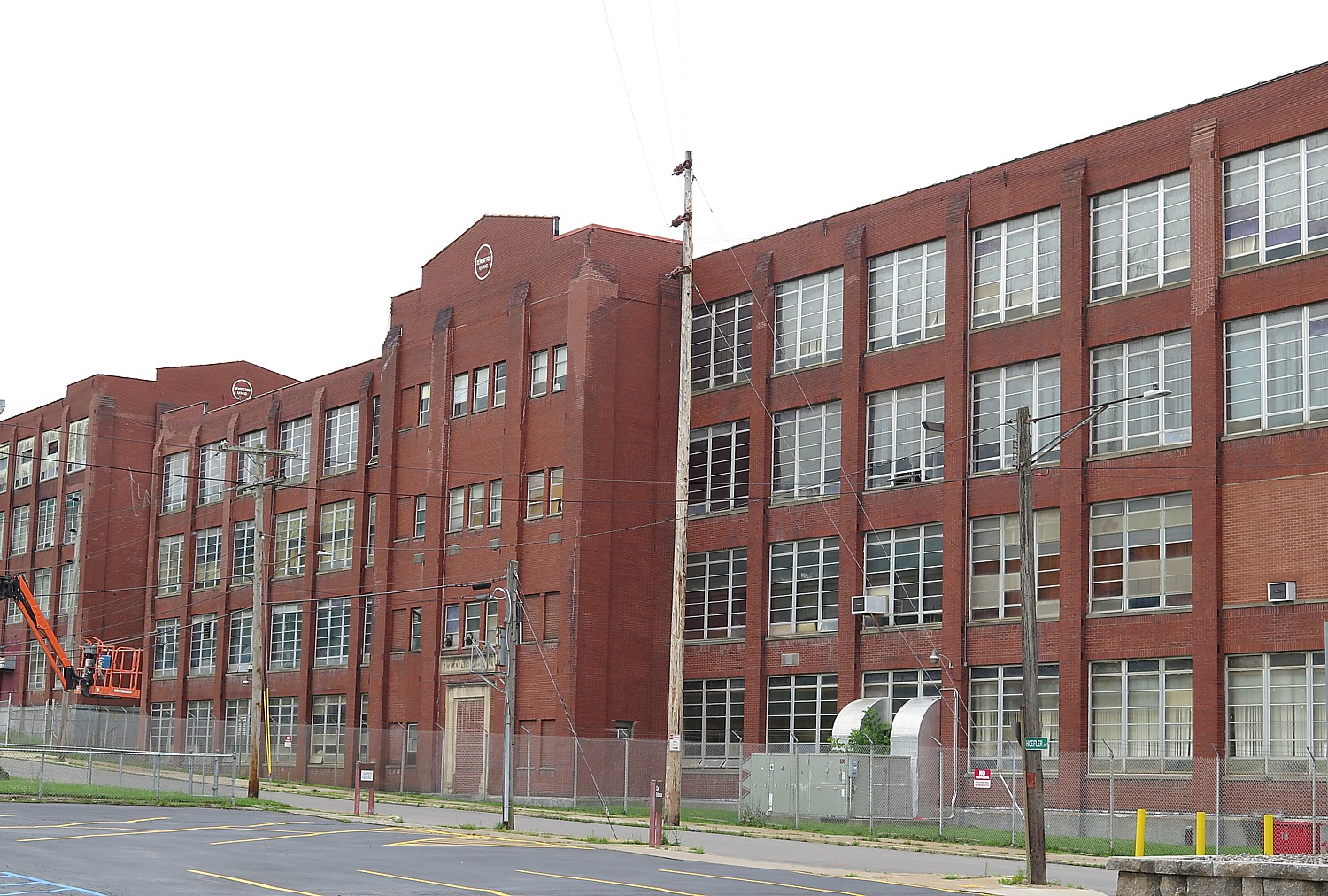
We ride past the Remington Arms Factory housed in a massive 19th century complex of brick buildings (the factory opened in 1816 and employed hundreds of people from here, which helps explain the pro-gun voting sentiment in this part of upstate New York). Two years ago, on my first Cycle the Erie biketour, I visited the Remington Museum (a highlight was seeing how they branded and marketed the guns, making a promotion deal with the celebrated Annie Oakley, for example; and how the company also produced other things, like bridges and typewriters but guns were the cash cow). I was looking forward to visiting again but it is closed and the cyclists are clearly not invited anywhere near the premises. (News update: the Remington Arms company has filed for bankruptcy protection – and I am reminded of several other periods of financial woes in its history – but I’m betting it won’t actually go out of the business of manufacturing guns.)
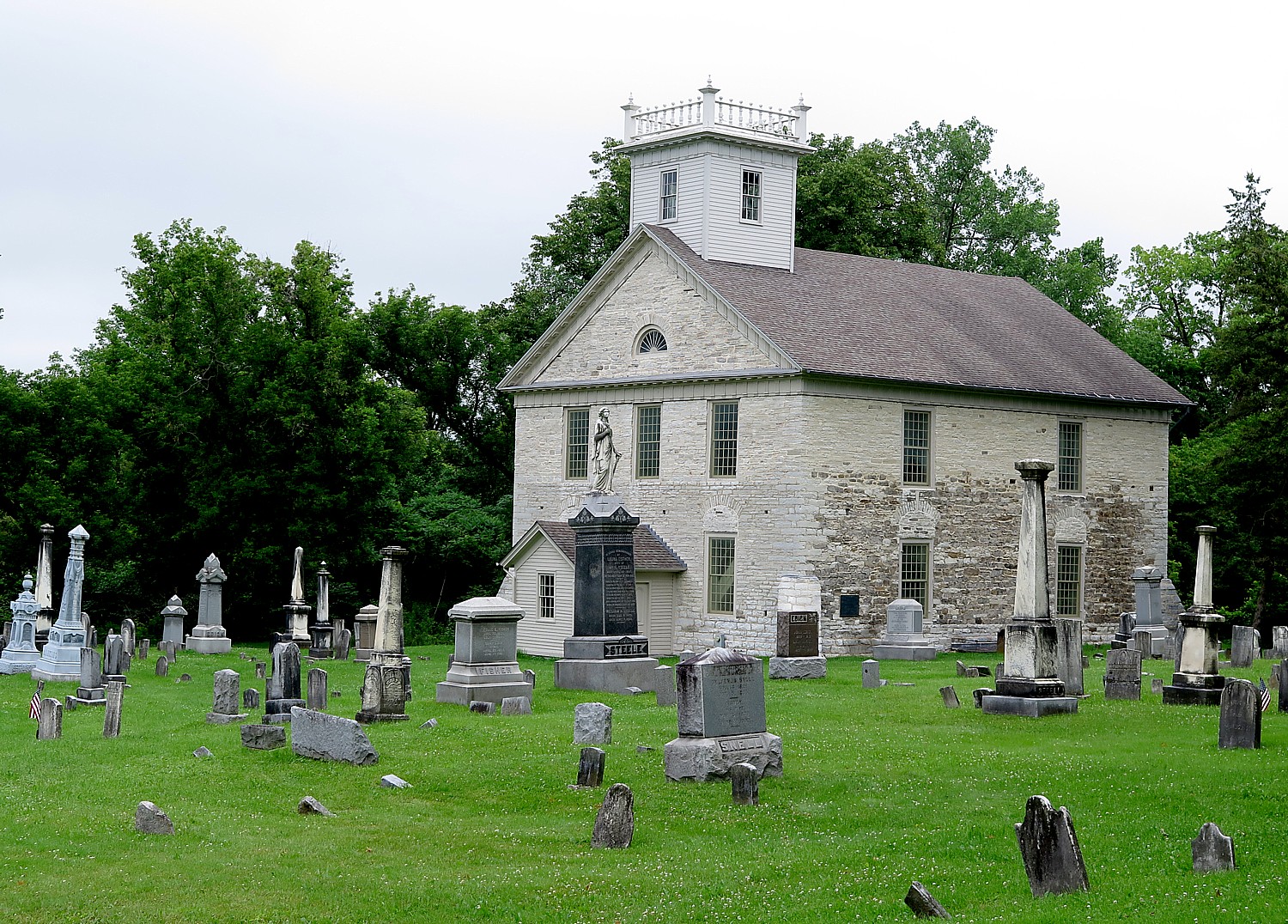
I come upon Historic Fort Herkimer Church, built around 1767 which is thought to be the second-oldest surviving church. From my visits to Fort Stanwix last evening, I understand why General Herkimer is known as “the most important hero of the American Revolution that few have heard of “. General Herkimer led that ill-fated group of 800 volunteers who were ambushed at Oriskany on their way to reinforce Fort Stanwix. Oriskany turned out to be one of the bloodiest battles of the Revolutionary War, with 600 killed in the space of an hour, but by a weird chain of events, indirectly altered the course of the Revolutionary War which the Americans were losing. Herkimer died here. Later (at Mile 43.4), we pass directly in front of Herkimer’s mansion home that is literally along the Erie Canal Trail, so I take a few minutes to walk the grounds before continuing on my way, paying respects to an unsung hero.
The second rest stop is at a beautiful visitor center at the Little Falls Canal Park on the bank of the river where I buy a long-sleeve t-shirt for added warmth). The weather improves after, with 25 miles to go, and I don’t need to wear the extra shirt.
Just beyond our rest stop at mile 41.5 at the Little Falls Rotary Canal Park, at mile 42.6, we can explore the glacial potholes of Moss Island, a National Natural Landmark and Lock 17, the highest lift lock on the Erie Canal (located .8 miles off the route but you don’t have to go back up). The geology here is most impressive: Moss Island trails let you see prehistoric potholes, extensive growth of mosses and lichens and some of the oldest rocks in North America. The Mohawk River Valley, the marker says, is the only horizontal break in the Appalachian mountain chain, which is what made it possible for the Erie Canal to be built and provide a water route west for trade and settlement of the United States interior.
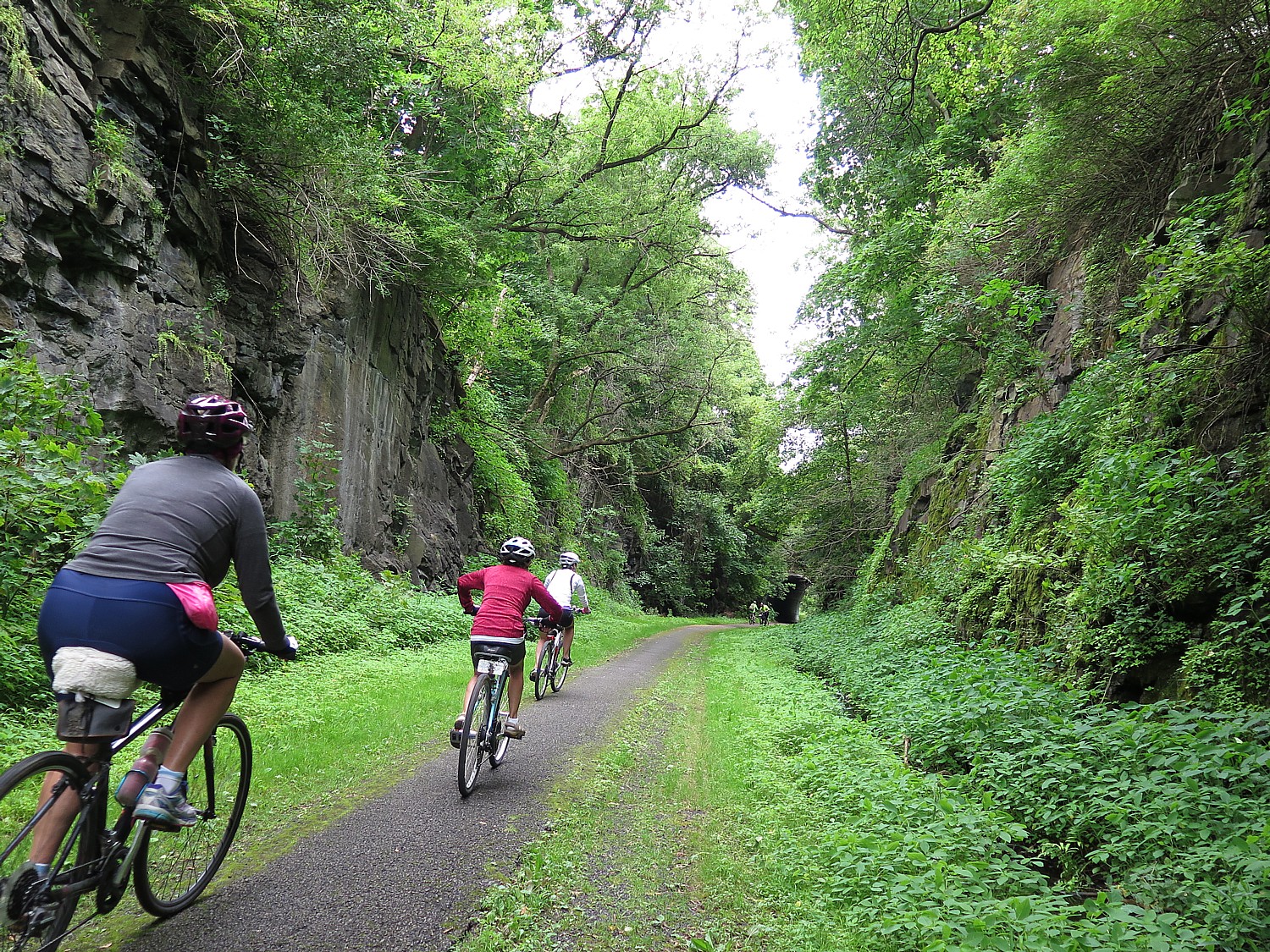
We pass German Flatts townpark, which you are unlikely to take note of, except that in Fort Stanwix, I had learned that German Flatts had been burned to the ground by Loyalists, part of the brutal scorched-earth strategy waged by both sides in the Revolutionary War.
This part of our ride immerses us in colonial-era America. At mile 52.5, we have an option of two routes to take into Canajoharie and consistent with my plan to do as much as possible differently from my first Erie Canal ride, I take the blue trail option along the road to three historic sites (I miss the first one, the Nellis Tavern built in 1747, which was serving travelers along this route well before the Erie Canal was opened, in 1825); I stop at Fort Klock, built in the 18th century where there is a 1750 farmhouse, a schoolhouse and a blacksmith shop); I see the Palatine church, built in 1770 by Palatine Lutherans, from across the busy road. But I also see Amish (or Mennonite) workers using a power saw, one gets into truck; an Amish horse and buggy passes by. I am happy with my decision.

One of the challenges of the entire 400-mile ride now faces us: the last mile is the steepest climb of the trip, up to the Canajoharie High School at the very top where we will camp. There is a t-shirt for anyone who makes the climb. (I almost make it but my gears fail me, and I give up.)

The Parks & Trails NY biketour organizers mercifully have arranged buses to take us back down into the town center to the Arkell Art Museum where we are being treated to a fantastic barbecue chicken dinner, and the museum is staying open for us until 7:30 pm (at a reduced fee of $5).
The Arkell Art Museum was established by the millionaire founder and first president of the Beech-Nut Packing Company. I hadn’t visited the museum the last time (when we also had a fantastic chicken barbeque dinner here), so I made a point of visiting this time.
Bartlett Arkell, built the original Canajoharie Gallery in 1927 based on galleries he had visited on his travels to Europe. A museum designed by Ann Beha and DesignLAB Architects was added in 2007 to the existing Canajoharie Library and Art Gallery to provide new space for exhibitions and programs.
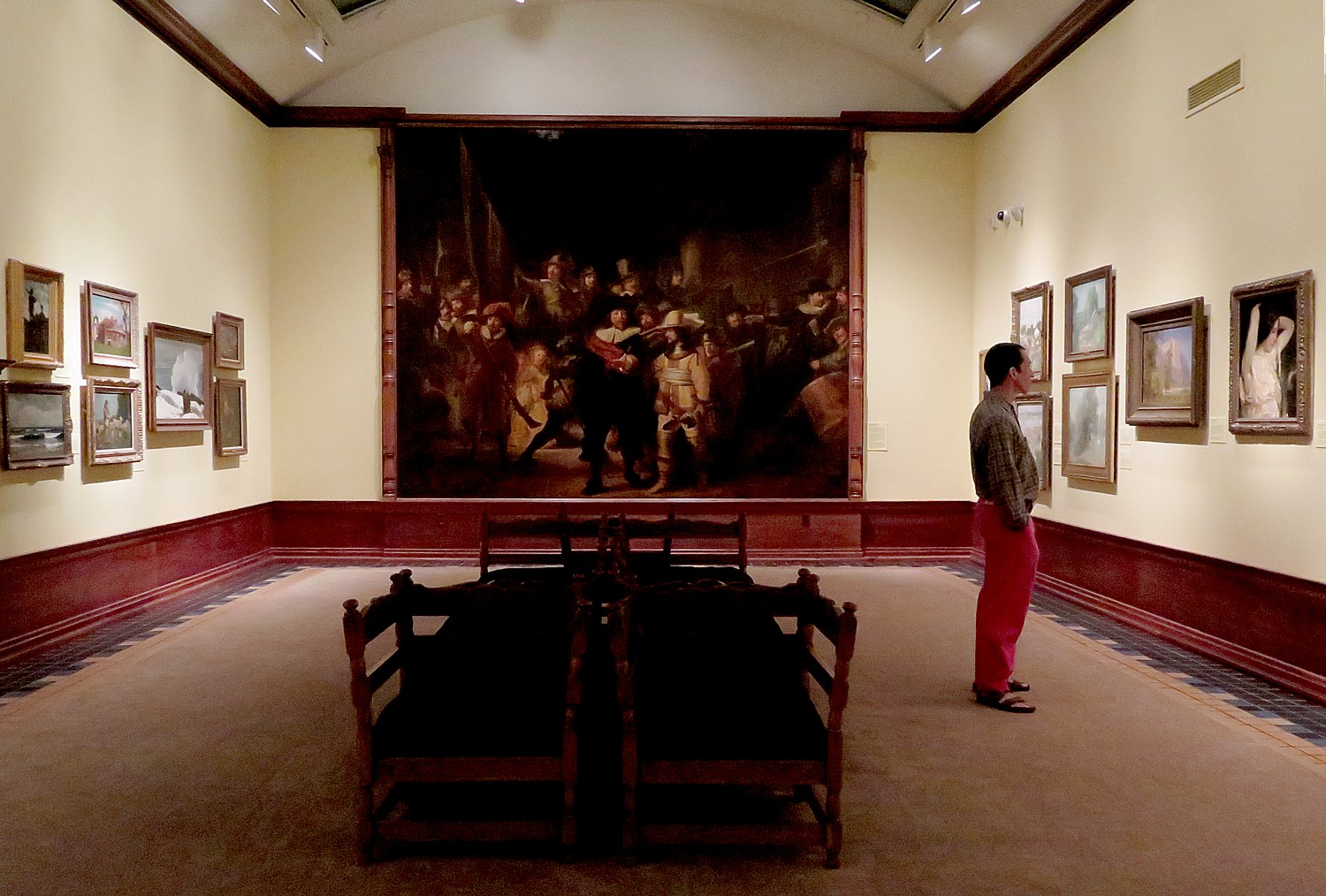
“Almost all of the paintings in the permanent collection were purchased by Bartlett Arkell for the people of Canajoharie. The American painting collection includes 21 works by Winslow Homer, and significant paintings by many distinguished artists, including George Inness, William M. Chase, Childe Hassam, Mary Cassatt, Georgia O’Keeffe, Robert Henri, and other members of The Eight. Permanent and changing exhibitions also feature selections from the museum’s Mohawk Valley History collection as well as the Beech-Nut as the Beech-Nut archives of early twentieth-century advertising material.”

I am even more intrigued by the exhibit that tells the story of Arkell and the Beech-Nut company, which (at least the photos suggest) was the Google of its day in terms of providing a cafeteria for its workers and other employee niceties.
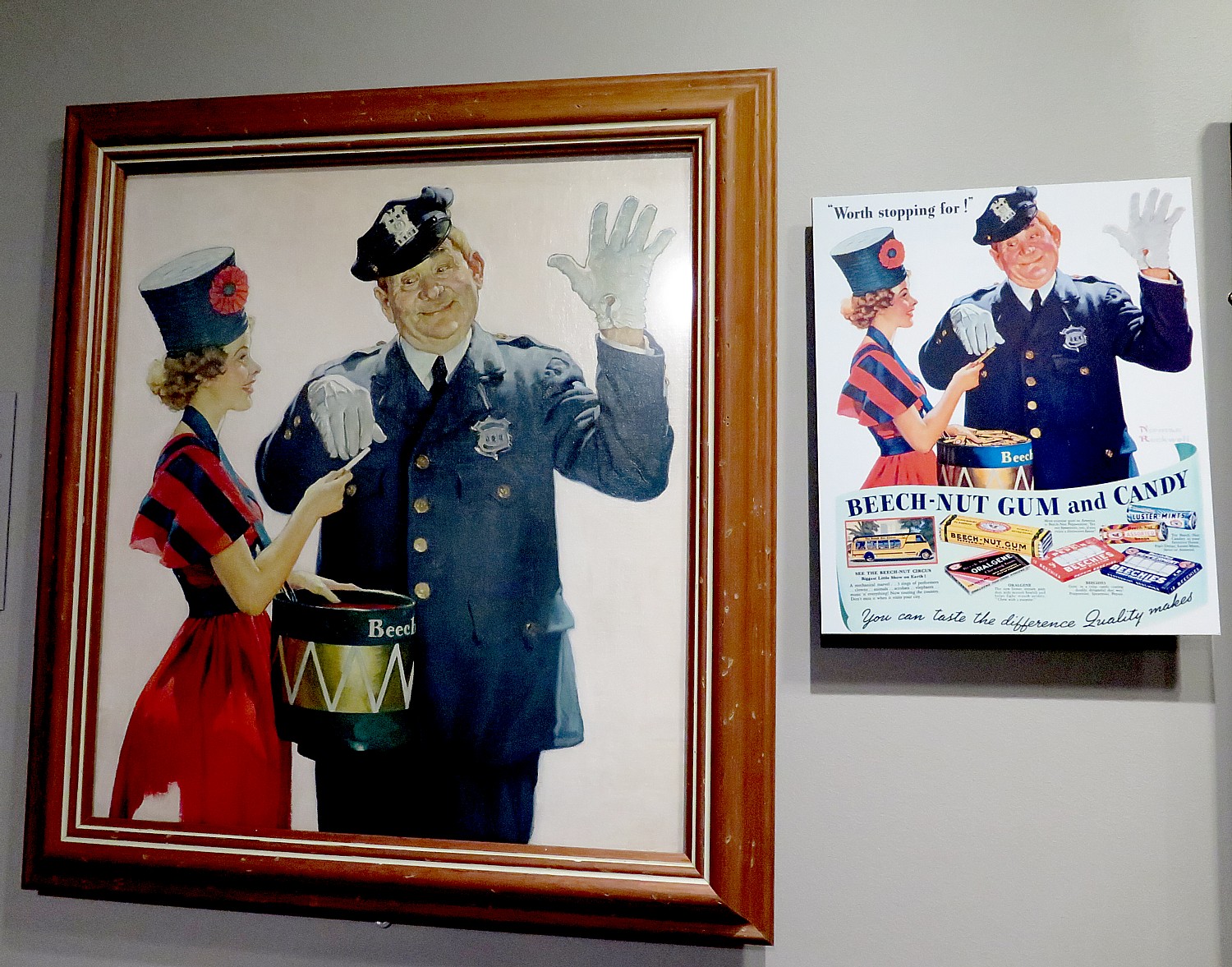
I learn that the key renovation that led to Beech-Nut’s success was the invention of the flour bag and that Beech-Nut began as a packaging enterprise; gum and candy came later (and used the peppermint oil from Hotchkiss Oil company in Lyons which we had visited).
You can see the old Beech-Nut factory (now shuttered) across the street; Beech-Nut was acquired by another company which has a new factory nearby.
(The Arkell Museum ,2 Erie Blvd., Canajoharie, NY 13317, 518 673-2314, info@arkellmuseum.org, arkellmuseum.org)
From the village center, we see the old high school, a cold, gothic style structure, up on another hill. The new high school, where we are camping, is luxurious. We wander around the quaint village, which has some striking Victorian architecture as a tribute to its wealth, before taking the shuttle bus back up the hill to our campsite.
I get back to the school in time for a rock n’ roll concert in the auditorium.
Day 7: Canajoharie to Schenectady, 46 Miles
It is Day 7 of our 8-day ride and we are already feeling nostalgic that the end of our 400-mile journey from Buffalo to Albany is near. It’s a nice day for biking the 46 miles to Schenectady: perfect temperature, little wind, morning sun. The trail is nice, with a slight downhill tilt.
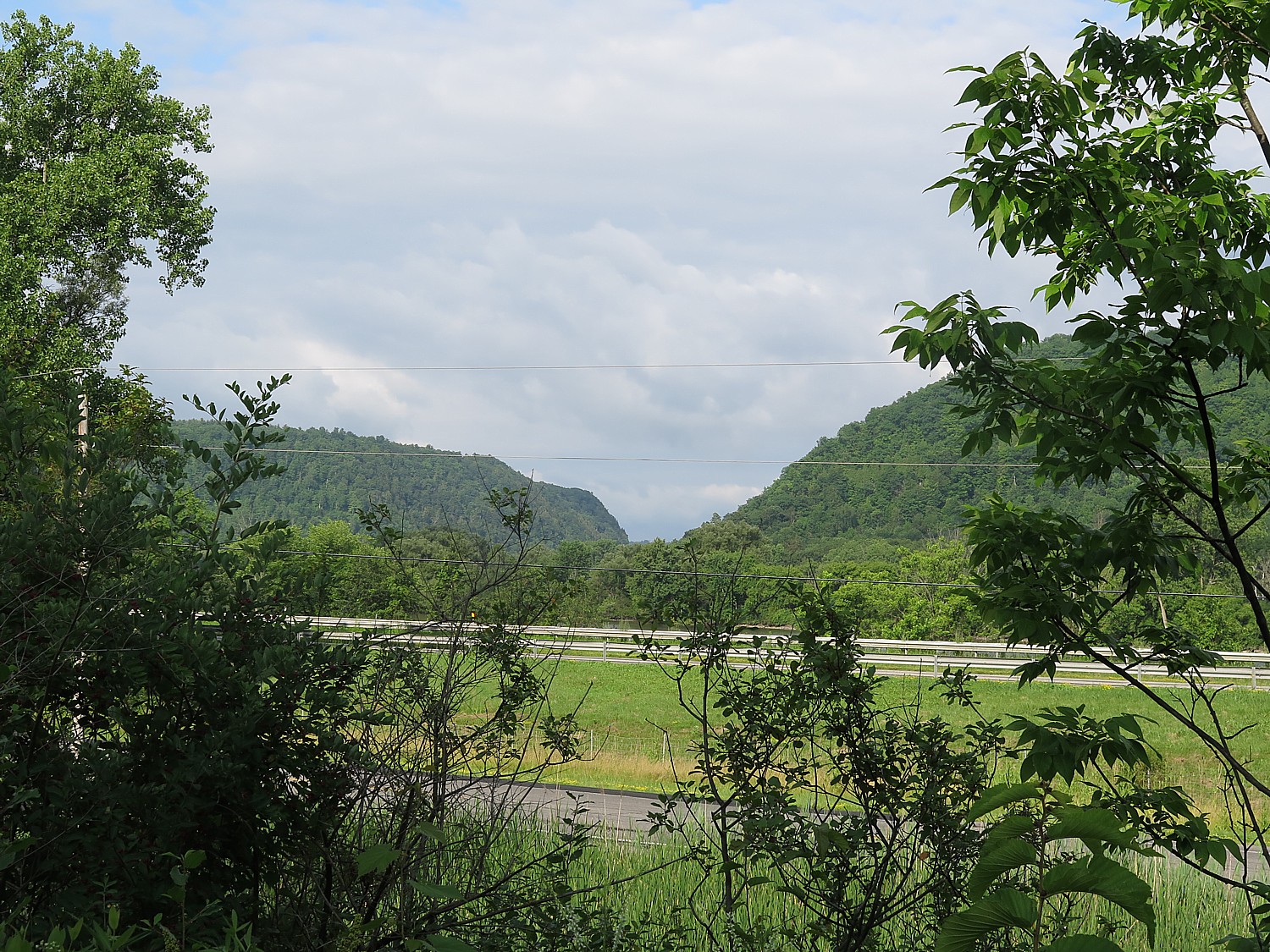
A fellow has stopped on the trail and I look to where he is looking and see “Big Nose & Little Nose” – where a glacier cut a path through Appalachians which is why this was always the place where the Erie Canal could be constructed (it’s hard to appreciate because of the overgrowth of trees).
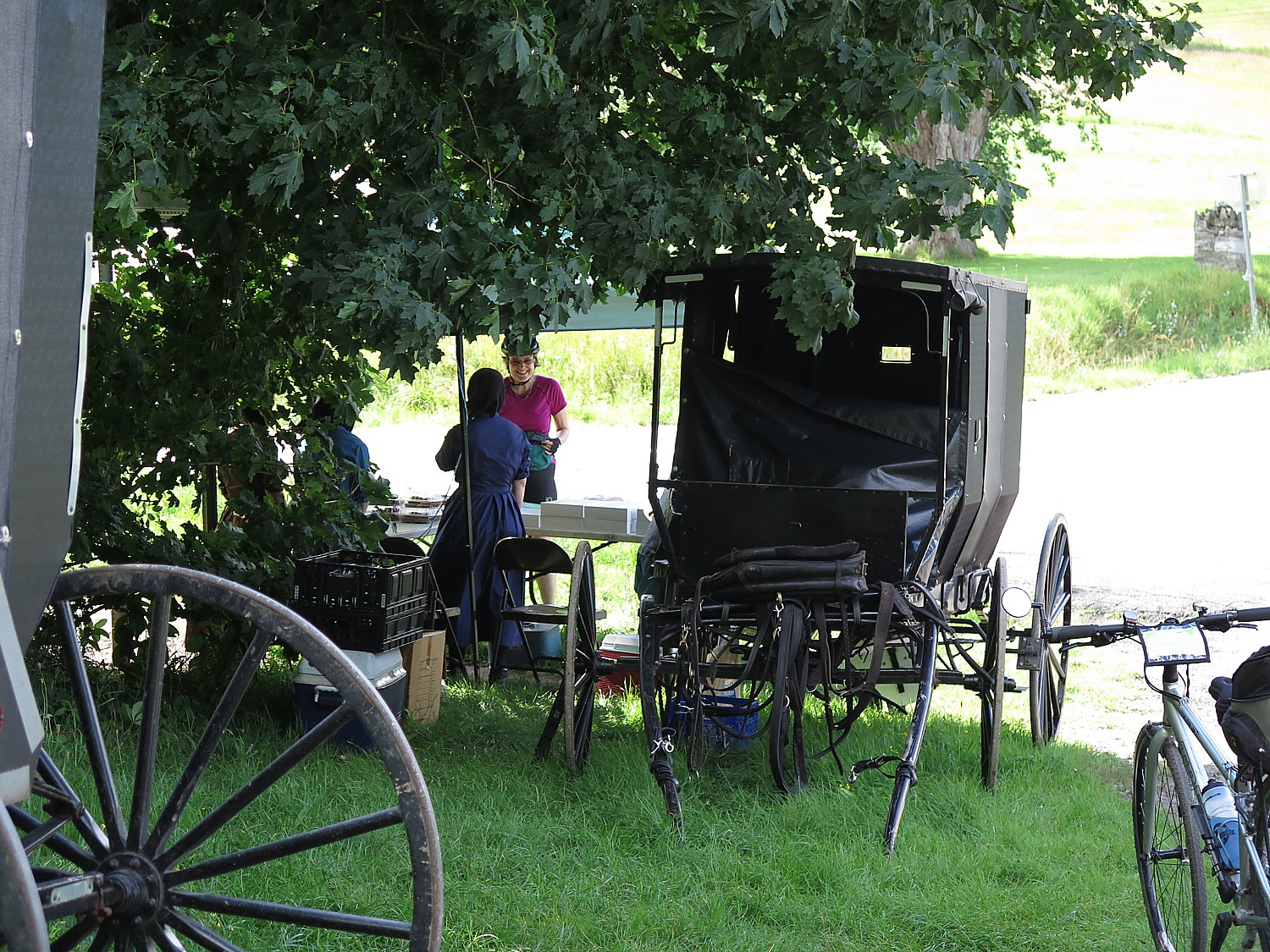
A highlight of this day’s ride is the new pedestrian/bicycle bridge across the Mohawk River connecting to Amsterdam.
The bridge is fabulous, much like the Walkway over the Hudson in Poughkeepsie (now one of New York State’s most popular attractions). I meet Michelle Eggleston who is a good-will ambassador for the town of Amsterdam, who tells me, “The bridge gives the community a sense of place,” she tells me. “More people are enjoying the river. My daughter started a kayak business, Down by the River Kayak. There are more boats on the river.”
Amsterdam used to be a center of carpet manufacturing factories which shut down, bringing down with them the economy and living standard of the city. Now many of these buildings have been repurposed to business incubators; there is ballroom in the clock tower.
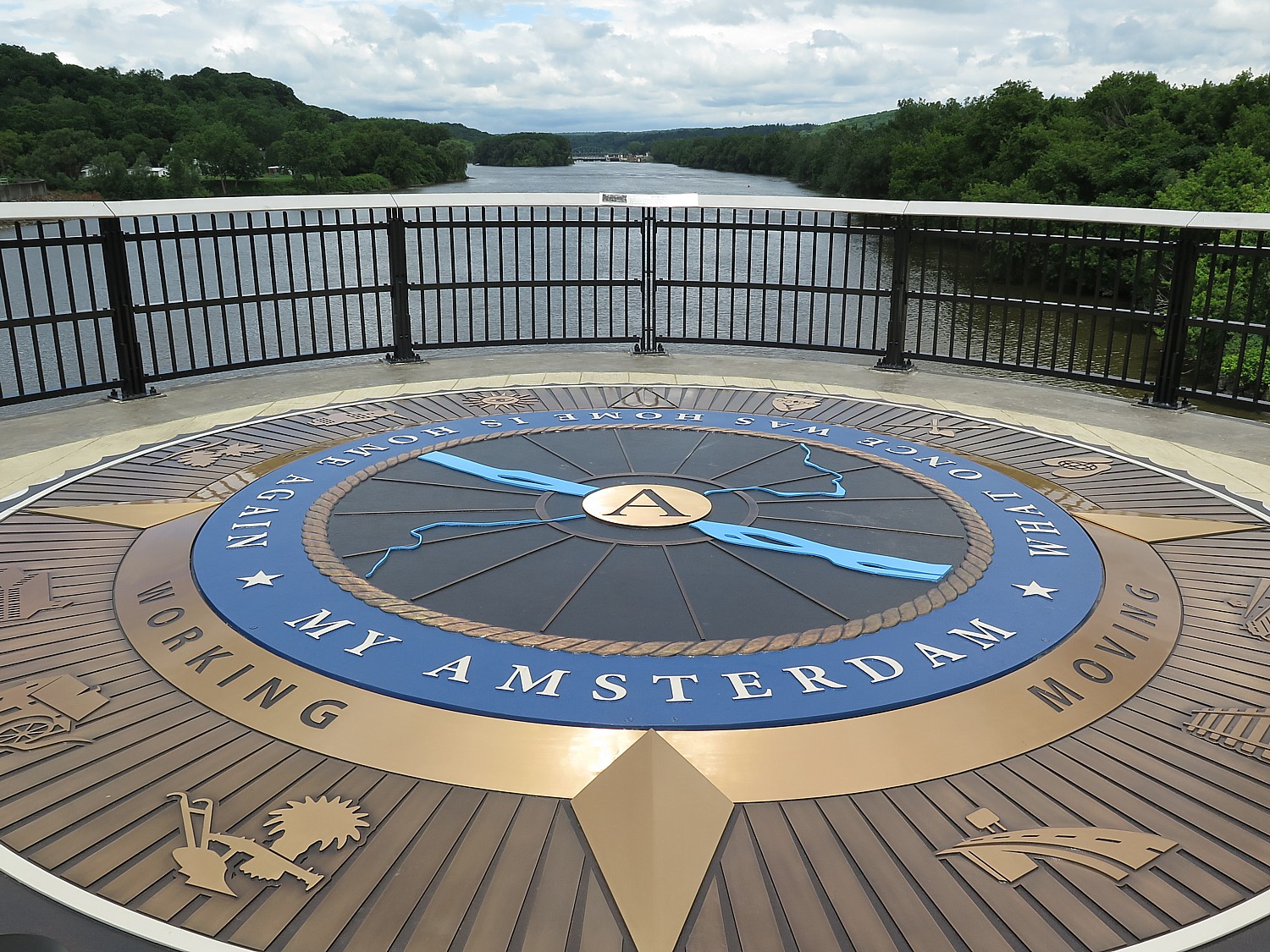
“New people are moving in. Two of my four kids bought houses in Amsterdam. They are seeing it as a great place to live – the waterfront, the bike trail, restaurants they can walk to. Other business are seeing that and that Amsterdam is a great place to be, and are coming in. We had the Albany Symphony here on July 4 – thousands of people on the bridge. I’ve lived in Montgomery County my whole life – I’ve never seen that before. We have been given a sense of place; people are proud of our town.”
In one fell swoop of the space of our bikeride, today, we have gone from colonial times to the Industrial Revolution, to the post-Industrial Revolution.
Next: Schoharie Crossing, Mabee Farm, Cohoes Falls and Finish Line of 8-Day, 400-Mile Cycle the Erie BikeTour
The 20th Annual Cycle the Erie Canal ride is scheduled July 8 – 15, 2018 (www.ptny.org/canaltour). In the meantime, you can cycle the trail on your own – detailed info and interactive map is at the ptny.org site (www.ptny.org/bikecanal), including suggested lodgings. For more information on Cycle the Erie Canal, contact Parks & Trails New York at 518-434-1583 or visit www.ptny.org.
The entire Erie Canal corridor has been designated the Erie Canalway National Heritage Corridor, Waterford, NY 12188, 518-237-7000, www.eriecanalway.org.
More information about traveling on the Erie Canal is available from New York State Canal Corporation, www.canals.ny.gov.
See also:
Cycle the Erie: 400 Miles & 400 Years of History Flow By on Canalway Bike Tour Across New York State
Cycle the Erie, Day 4: Seneca Falls to Syracuse, Crossing Halfway Mark of 400-Mile Biketour
Cycle the Erie: At Fort Stanwix, Rome, Time Travel Back to America’s Colonial, Native American Past
_____________________________
© 2018 Travel Features Syndicate, a division of Workstyles, Inc. All rights reserved. Visit goingplacesfarandnear.com, www.huffingtonpost.com/author/karen-rubin , and travelwritersmagazine.com/TravelFeaturesSyndicate/. Blogging at goingplacesnearandfar.wordpress.com and moralcompasstravel.info. Send comments or questions to FamTravLtr@aol.com. Tweet @TravelFeatures. ‘Like’ us at facebook.com/NewsPhotoFeatures
